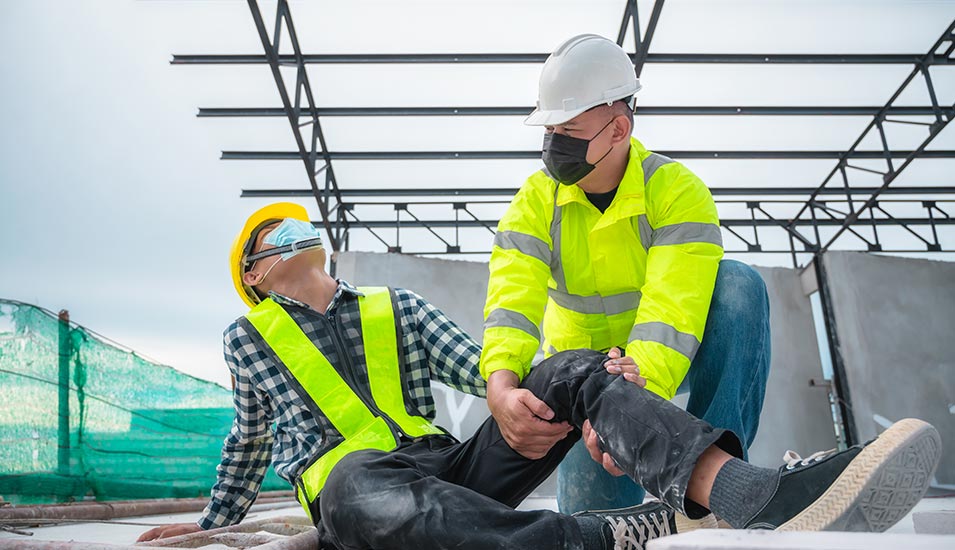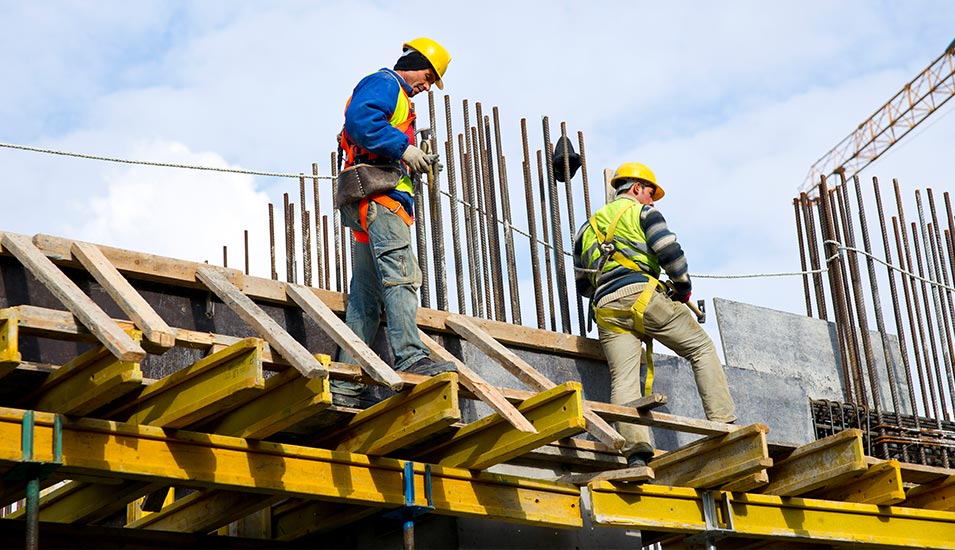
There are several industries where workers face real safety risks on a daily basis. Probably none more so than the construction industry. From shifting heavy loads to working on fragile surfaces and dealing with toxic materials, construction workers face many hazards. So what are the top 6 safety risks in construction and how can you mitigate against them?
Table of contents:
Top 6 Safety Risks in Construction: Working At Height
Unsurprisingly, working at height is a huge safety risk. That’s why there are working at height regulations in place for site managers to follow.
In 2019/2020, a total of 29 workers in Great Britain suffered fatal injuries after falling from height. Even with collective and personal protective equipment in place, there is not a 100% guarantee that working from height can be safe. For example, workers may be carrying out tasks over the edge of a building, on a fragile surface or above a hole in the ground.
Moving Obstacles and Machinery
Construction sites are exceptionally busy places. There are cranes, trucks, scaffolding and other tools being used to carry out all kinds of building works. Moreover, the machines and drivers are moving along uneven surfaces which are open to all kinds of weathers and environmental factors.
As well as this, if you’re concentrating on a particular task in hand, you may not notice other people or machinery moving around you. Therefore it’s important to be aware of your surroundings at all times on a construction site.
Additionally, there is the risk of falling debris. When you’re working below on another level, you may not notice what is moving around above your head either.
Hazardous or Toxic Materials
It could be asbestos, heavy metals or chemicals such as solvents or pesticides, but you are probably aware that construction sites are full of dangerous materials. Perhaps the dangerous nature of the material is not always obvious. It’s only after you’ve been around it for a long time that you may experience symptoms.
Furthermore, construction workers must store the materials safely under specific regulations which means moving them into the right place.
According to the Health and Safety Executive, waste is deemed as hazardous when it contains substances that are harmful to human health or the environment, although it doesn’t need to have an immediate effect.
The duty of care when it comes to handling hazardous waste depends on whether you are a producer, holder, carrier or a consignee.
Slips, Trips and Falls
When it comes to construction sites, the cause of most non fatal accidents is slips, trips or falls. It’s easy to see why. There is demolition, building and excavation going on throughout a site. And it all creates mud, holes, uneven ground and trip hazards.
Ideally, a site manager can reduce the risk of slips and trips by making sure the site is as tidy as it can practically be. So putting tools away in the right places or creating safety zones where workers enter and exit the site.
This is also where safety awareness training can help. It could be that some people don’t recognise potential hazards or risks. Even putting your tools down on a scaffolding can potentially cause the next person to trip over. Or they might knock the tool accidentally which then falls heavily onto a person below.
Handling Materials
How to handle material is an essential part of health and safety training.
For example, storage areas should be clean and organised. Whole sites should be kept safe and clean and easy to move around.
Moving heavy loads requires safe bagging and the correct, working machinery to lift them. If you’re using a ladder for example to reach materials, you must place it on a stable, level floor. Or if you’re moving fluid material from one level to another, you could build a ramp to move it up without any spillages.
Once again, the correct protective equipment can help to keep workers as safe as possible while handling materials. For example, using flame retardant gloves, a high visibility coat, a helmet and safety goggles.
Staff should also have training in how to lift and move heavy loads correctly so they don’t hurt themselves.
Top 6 Safety Risks In Construction: Noise
When it comes to a building site, it’s a noisy place. There’s construction machinery, lots of people, and various tools operating at the same time. Drilling, hammering, cutting and shouting to make yourself heard can all contribute to noise levels.
As well as this, the repetitive and excessive nature of the noisy work can potentially cause long term hearing problems. It could also lead to a dangerous situation when trying to communicate across the noise.
Site managers must carry out a comprehensive noise risk assessment on site and issue appropriate personal protective equipment. This can include ear defenders and ear plugs. However, there must be an element of common sense in using them so that everyone can understand each other.
Accident Statistics in Construction
The statistics from 2020 in Great Britain show how dangerous it can be to work in the construction industry and why safety is paramount.
For example, 57% of workers suffered from a form of musculoskeletal disorder. Meanwhile 27% suffered from stress, anxiety or depression.
Of all the accidents that took place, 40 workers were fatally injured. 47% of accidents involved falling from height, while 16% involved being trapped by something collapsing.
In 12% of accidents, a worker was struck by a moving or falling object and 10% were hit by a moving vehicle. Finally 4% had contact with electricity.
Conclusion: Top 6 Safety Risks in Construction
To conclude, as you can see above, the risks while working on a construction site are very serious. This article only mentions the top 6 safety risks in construction but there are many more.
It is possible to reduce the risks by doing a comprehensive risk assessment before the work begins. Identifying the hazards around the site will help you to prepare the right safety equipment for workers to use. Keeping the site clean and tidy and free from trip hazards will enable it to be a safer place through the duration of the job.
Finally, making sure that your team has the proper safety training and awareness will contribute significantly to keeping everyone safe.

